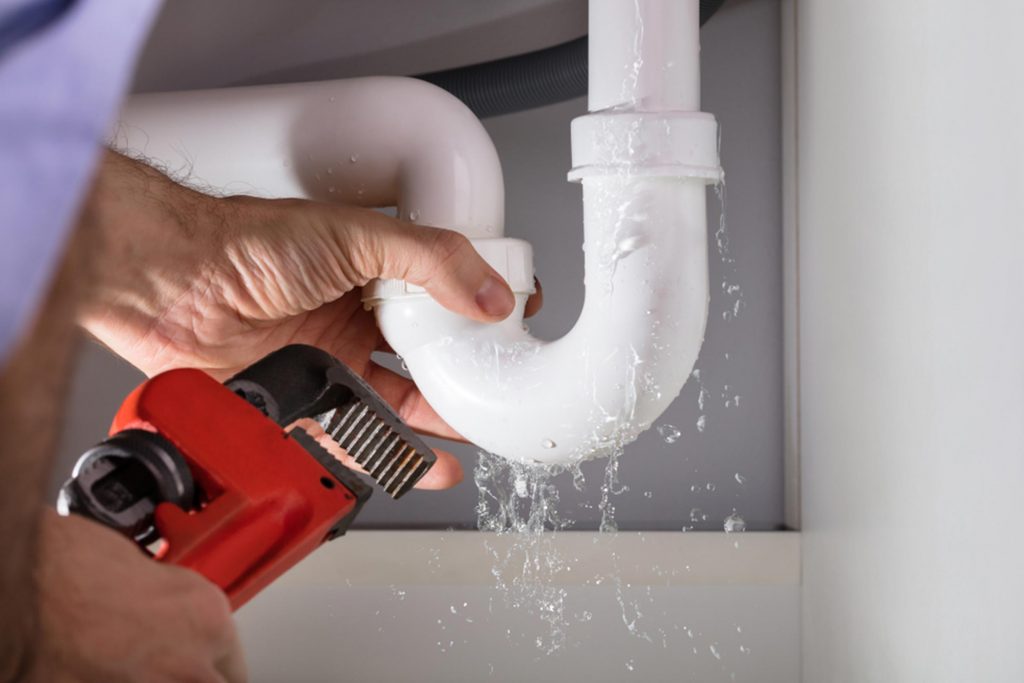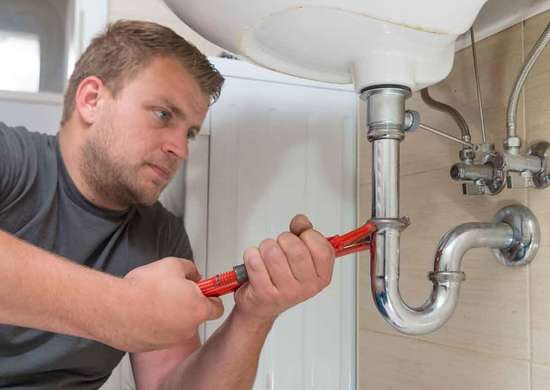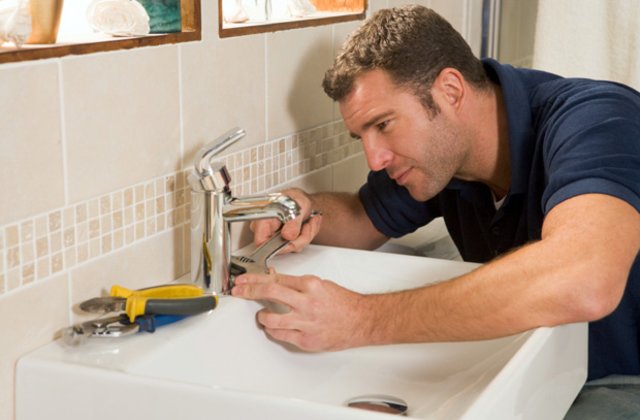
Envision awakening tomorrow to a lake where your basement utilized to be. Boxes of old household images and high school yearbooks are entirely ruined. You pinch yourself and recognize that this isn’t a headache. It’s reality, and your hot water heater sprung a leakage overnight.
It might seem like a significant situation, but plumbing catastrophes take place every day. Within your home is a complex network of pipes, drains pipes, and devices that all collaborate to make your life much easier.
We tend to ignore things we do not see, and plumbing systems mainly run far from the naked eye. However, just like everything else, your plumbing undergoes wear and tear. And the very best method to prevent a catastrophe is with an excellent understanding of standard pipes issues and options.
Get to know your water main
Your water main is the first gain access to point for water going into your house. It’s generally located in the basement near the hot water heater. On the water pipe, you’ll see a shutoff valve (either a lever or wheel). This valve will totally stop the flow of water into your house when you close it.
If you ever have to do a significant pipes job, or if you have a situation like a leak or a burst pipeline, shutting off the water main is going to be the initial step you take.
Find out how to deal with clogged up drains
Eventually, you’re going to have a clogged drain. When we take showers, our hair falls out and it develops gradually. Your first impulse, when faced with a blockage, might be to use among those liquid drain cleaners. Huge mistake.
That’s right, avoid liquid drain cleaners like the afflict. We know, it appears like an easy fix to an annoying issue. However, the chemicals in Liquid Plumber and other comparable products can harm your plumbing facilities. If your sink or tub keeps backing up, get a snake or similar tool that can pull out any debris obstructing your pipes.
Keep tabs on water pressure
It’s such an important part of a healthy pipes system. Much like we get our high blood pressure taken each time we check out the physician, you must be monitoring your home’s water pressure as frequently as you can. You can pick up a simple pressure gauge quite cheaply at any hardware or home improvement shop.
If you want a more accurate, modern-day solution, set up a clever home water tracking system like the Flo by Moen. That way you can remain on top of your water pressure in real-time, spot leakages, and track water usage.
Have a working pressure reducing valve
If you do have high water pressure in your house, you’re going to want to ascertain a safe level. You can do this by installing (or replacing) your pressure minimizing valve, or PRV. PRV’s are a must-have in many homes that depend upon a municipal water system. That’s due to the fact that community water companies have to pump water at high pressures to serve fire hydrants, high-elevation homes, and skyscrapers. They frequently provide water at over 100 psi, while your house (and all your pipes fixtures) are created for pressure in the 50-60 psi variety.
Look after your toilet
You can begin by making certain you only flush toilet paper and your own waste down the toilet. Cotton swabs, baby wipes, paper towels and other things can all get captured in your pipes and result in blockages. If you do not own a plunger, pick one up the next time you’re out (all of us get a clog ultimately).
You likewise wish to ensure your toilet is working correctly. A running toilet is an indication that one or more elements in the toilet tank need replacing. But sometimes toilet leakages can be so small they do not make any noise. You can look for these unnoticeable leaks by putting food coloring in the toilet tank. After half an hour, inspect the water in the toilet bowl. If you see any color, you’ve got a leakage.

Regard your garbage disposal
Waste disposal units are amazing tools to have in your home however they certainly can’t deal with whatever. Be especially cautious of putting any fats, oils, or grease down the drain. These will strengthen when they cool down and can cause buildup in your pipelines.
Before running your garbage disposal, let some cold water encounter the drain for 5 or ten seconds initially, and continue to run cold water for a couple of seconds after you stop. Put some ice cubes in the garbage disposal regularly to keep the blades sharp.
Clean out your seamless gutters as often as you need to
While seamless gutters aren’t technically part of your pipes system, they’re essential for keeping water out of your home. Blocked seamless gutters trigger water to swimming pool on your roof, compromising the structure and ultimately letting that water in. As a house owner, water damage is something you wish to prevent at all expenses. You ought to at least have them cleared out in early spring and late summertime. If you have many pine trees (which she’d like crazy) on your property, plan on having them cleaned more regularly.
Safeguard your pipes from the cold
Water damage from frozen pipeline bursts can easily result in a five-figure repair work costs. If you live anywhere that gets cold in the winter season, you’re going to want to get your pipelines winterized. Ensure your home is correctly insulated and any exterior pipes and fixtures have some cold weather protection.
Pipeline bursts frequently occur when people are away from their homes for prolonged periods of time and the thermostats are set too low. So while it might be tempting to attempt to save a couple of dollars on your heating expenses, keep your home at around 60 degrees if you’re taking a winter trip.
Know when to change your water heater
Water heaters have a life-span. If yours is entering the double-digits, it’s most likely time for a replacement. This is a location where you don’t want to put things off. That hot water heater tank is holding 50 gallons or more. That’s ample water to do some major damage if that tank springs a leak. If you wind up replacing your water heater, you ought to proceed and replace your sump pump too.
Try to find indications of water leaks
Water leaks can occur all over your house. Sometimes they’re out in plain sight, however, you ‘d marvel frequently small water leakages fly under the radar. Look for spots of staining on walls and ceilings.
A musty, mildew smell in basements, attics, or crawl spaces is a typical indication of mold accumulation, which is typically the result of water leaks. Make it a routine to regularly check around water fixtures and appliances for leakages.

Fix dripping faucets
Dripping faucets are frustrating. They also squander a ton of water. Even a drop or more every minute amounts to thousands of gallons in a year (and additional dollars on your water expense). Dripping faucets are typically brought on by two things: high water pressure, or a defective element in the component. If you have a working PRV, chances are it’s the latter.
Many faucet repair jobs can be done yourself. What you’ll need to do is figure out the type of component you have. Ball faucets are the kinds you normally find on your cooking area sink. Cartridge faucets and disc faucets are more typical in bathrooms. You’ll discover DIY repair work videos for all three online that will direct you through the repair procedure.
Discover a local plumbing professional and get an evaluation
Unless you’re an expert plumbing technician yourself, it’ll settle big time to add regional plumbing to your Rolodex. Not every pipes problem has a simple DIY fix. And having someone on speed-dial that you’re on a first-name basis with will make life easier if you end up with a plumbing catastrophe a long time down the road.
Look around. Ask good friends, neighbors or colleagues for suggestions. Find a plumber with good credibility and provide a call.
The best way to kick-off a new relationship with a plumbing technician is to have them do a house assessment. Professional plumbing can give you a report on the state of your entire plumbing system, recommend repair work and assist you to create a preventative
